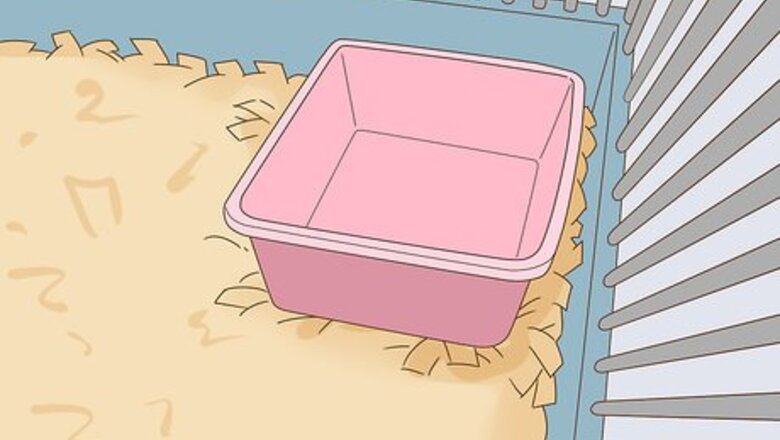
views
Putting a Litterbox in the Cage

Put a small litterbox in the corner of your rat’s cage. Many different sizes and shapes of litterboxes can be purchased online or from your local pet shop. Make sure to get a litterbox that your rat’s whole body can fit inside. Set the cage in one of the corners to make a designated waste space. If your rat lives in a large cage, you may want to temporarily transfer it to a smaller cage while it learns how to use a litterbox. Since rats don't like to soil the areas where they sleep and eat, the small cage will force your rat to start using the litterbox. If your rat likes to dig, get a litterbox with a grate on top. If you don’t want to buy a litterbox, you can also use a food tray or lid. Make sure the litterbox is shallow enough for your rats to easily get in and out.Tip: If you notice an area where your rats regularly go, you can also place the tray or litterbox in that area to make training easier.

Fill the tray with a dust-free litter. Rats have sensitive noses, so choose a litter that’s unscented and dust-free. Cover the bottom of the litterbox with a thin layer of the litter so it can absorb any of your rat’s waste. One option you may choose is a dust-free litter made from recycled newspapers. Don’t use the same material that you use for your rat’s regular bedding. Otherwise, it will be difficult for your rat to know the right place to go.
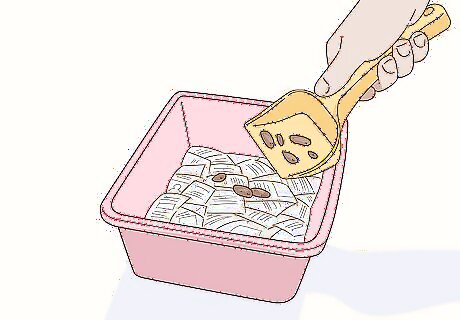
Move some of your rat’s droppings into the litterbox. As you’re cleaning out your rat’s cage, collect 4-5 of your rat’s droppings and place them in the litterbox. This way, your rats will smell where they last went so they can go back. Use the freshest droppings in the cage so they have a stronger odor for your rat. Make sure your cage is clean when you start rats on litter so they don’t smell any places where their droppings used to be.
Training Your Rat
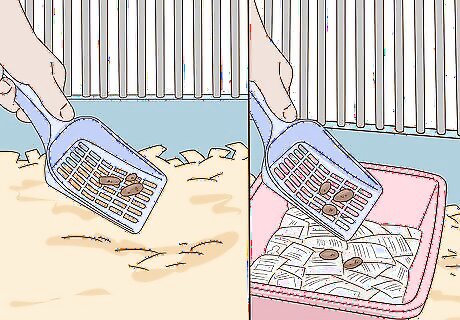
Clean any droppings outside of the litterbox immediately. If you see droppings anywhere else in the cage, pick them up as soon as you notice and place them in the litterbox. Make sure not to leave any droppings or else the training won’t be as effective. Always keep about 4-5 droppings in the litter while you’re training so the rat knows where to go.
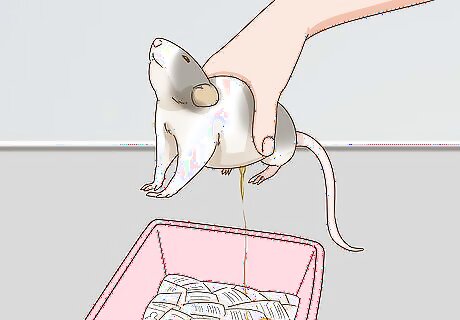
Pick your rat up directly above the litterbox. Sometimes, rats will urinate when you pick them up as a natural instinct. When you lift your rat, start to hold it right over its new litterbox so it learns to associate going to the bathroom with the litterbox area.
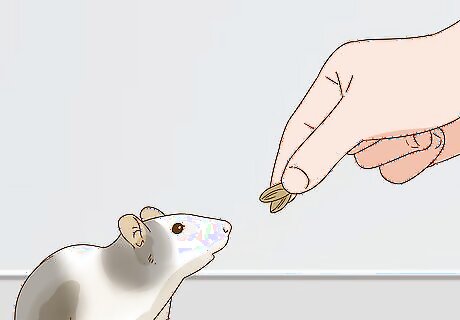
Give your rat a treat when it uses the litterbox to reinforce good behavior. When you start noticing your rat doing its business in the litterbox, praise it with a cheerful voice before giving it a small treat. For the first 2-3 weeks of training, give a treat every time the rat goes in that area of the cage. Tip: Good treats for rats include frozen peas, sunflower seeds, or nuts in their shells.
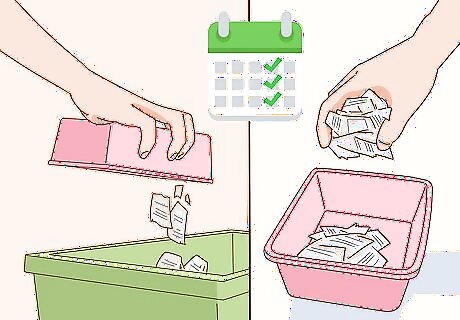
Clean out the litterbox at least once a week. Once every week, empty the litter and droppings into the trash. Fill the litterbox with fresh litter once you put it back in the cage. Make sure to clean the litter weekly so your cage doesn’t develop any odors. If the litterbox has even the slightest odor coming from it, change the litter. Rats have a very sensitive respiratory system, and the scent of ammonia coming from the litterbox can cause your rat to develop pneumonia. While you’re training your rat, leave a little bit of soiled litter or some droppings in the litterbox so they know where it is.




















Comments
0 comment